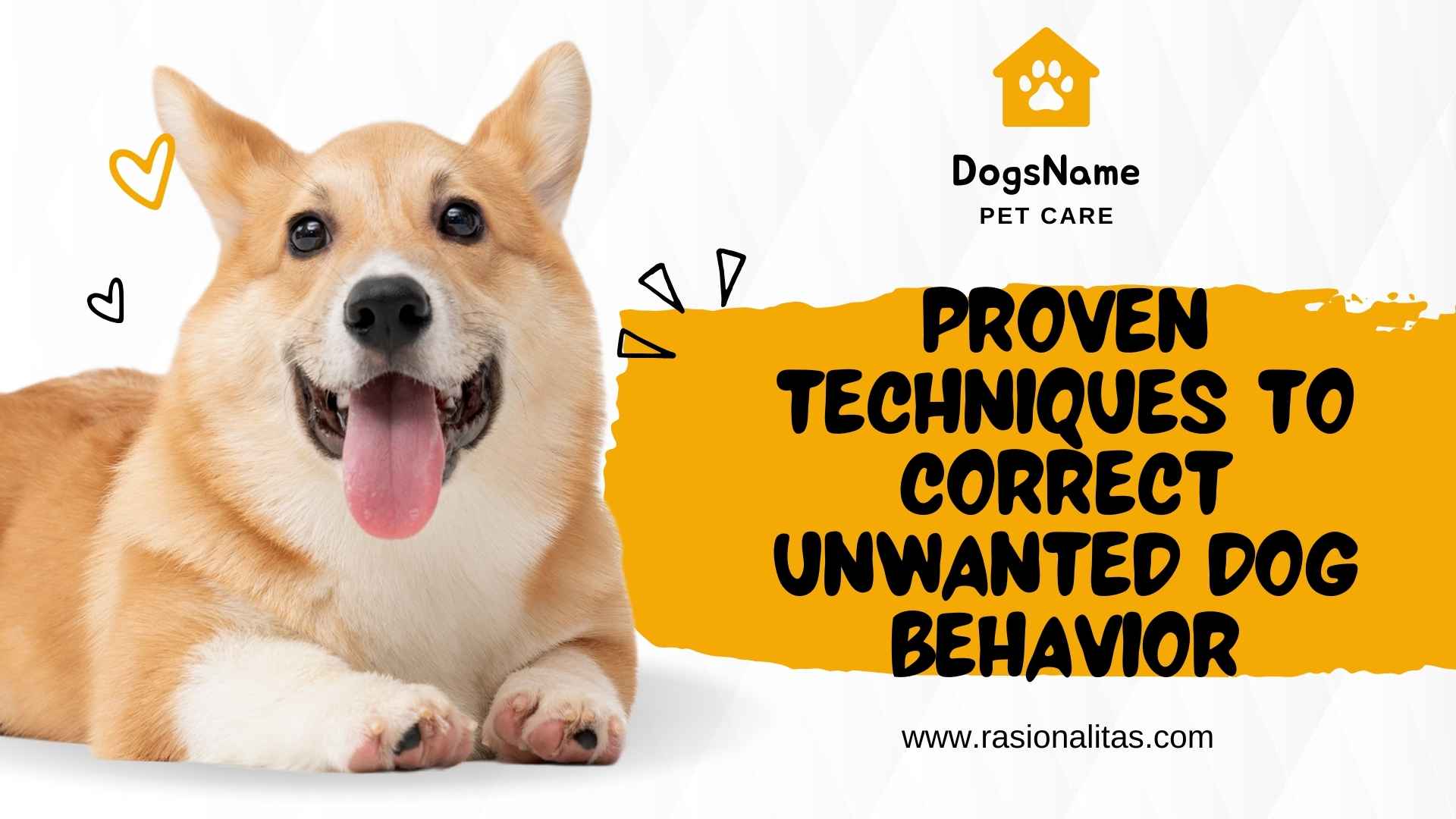Welcome to the wonderful, sometimes chaotic, world of dog ownership! As a long-time dog enthusiast and owner, I’ve seen it all: the chewed-up shoes, the relentless barking at the mail carrier, and the “selective hearing” when it’s time to come inside. I know it can be frustrating, but I’m here to reassure you that you’re not alone, and there is a clear path forward.
Whether you’re a new owner navigating puppyhood or an experienced handler facing a new challenge, understanding how to communicate with your dog is key. This isn’t about dominance; it’s about building a bond of trust and respect. Together, we’ll explore my top 10 proven techniques to correct unwanted dog behavior, turning those challenging moments into training opportunities.
These methods are designed to be kind, effective, and easy to understand. We’ll skip the complex jargon and focus on practical steps you can start using today. Let’s begin this journey to a happier, better-behaved companion.
The Core Philosophy: Why Positive Reinforcement Works
Before we dive into the specific techniques, let’s talk about the foundation of all good training. The most effective and humane approach is positive reinforcement. Simply put, this means rewarding the behavior you want to see, which makes your dog more likely to repeat it. It’s a much better long-term strategy than punishing the behavior you don’t want.
What is the Best Dog Training Method?
When people ask me this question, I always point them toward positive reinforcement. It builds a trusting relationship and makes training a fun game for your dog, not a scary task. The “reward” can be a tasty treat, enthusiastic praise (“Good boy!”), or a favorite toy.
1. Master the “Redirect and Reward” Technique
This is one of the most powerful techniques to correct unwanted dog behavior, especially with puppies. Instead of just saying “No!” when your dog is doing something wrong, you actively redirect their attention to an appropriate activity and then reward them for it.
How to Stop a Puppy from Chewing on Furniture
Imagine you catch your puppy gnawing on the leg of your coffee table. Your instinct might be to scold them. Instead, calmly take their attention away from the table and offer them an exciting chew toy. When they start chewing the toy, praise them enthusiastically!
By doing this, you’re not just stopping the bad behavior; you’re teaching them what to do instead. This is a crucial distinction. You are actively showing them the right choice.
Curbing Nipping and Play-Biting
The same principle applies to nipping. If your puppy starts nipping your hand during play, yelp “Ouch!” in a high-pitched voice, briefly withdraw your hand, and then offer a toy for them to bite. This teaches them that human skin is sensitive, but toys are fair game.
2. Implement Effective, Calm “Time-Outs”
A time-out isn’t about punishment in a human sense. For a dog, it’s about removing them from a fun or over-stimulating situation for a brief period. This is an excellent tool for calming an overexcited dog or stopping persistent, attention-seeking misbehavior.
The key is to keep it short and calm. If your dog is getting too rough or won’t stop barking for attention, calmly lead them to a “boring” space (like a bathroom or laundry room with no toys) for 30-60 seconds. Once they are calm, you can let them out. This is not crate punishment; their crate should always be a positive, safe space.
3. Manage the Environment to Set Your Dog Up for Success
One of the easiest ways to prevent unwanted behavior is to manage the environment. This is often called “dog-proofing” your home. If your dog has a habit of stealing food from the counter, the simplest solution is to not leave food on the counter.
Puppy-Proofing Your Home is a Must
Keep shoes in the closet, put electrical cords out of reach, and secure trash cans. By removing the temptation, you prevent the problem from ever happening. This proactive approach saves you a lot of frustration and keeps your dog safe. Baby gates are also a fantastic tool for restricting access to certain areas of the house.
4. Teach Incompatible Behaviors
This sounds complex, but it’s a wonderfully simple concept. An incompatible behavior is an action that your dog cannot physically do at the same time as the unwanted behavior. It’s one of my favorite techniques to correct unwanted dog behavior because it’s so proactive.
How to Stop a Dog From Jumping on Guests
A dog can’t jump up on someone if they are sitting down. So, instead of focusing on “stop jumping,” you focus on teaching a rock-solid “Sit” command. When a guest arrives, ask your dog to “Sit” and reward them for keeping their paws on the floor. Their new “job” is to sit for greetings, which is incompatible with jumping.
Stop Dog Begging at the Dinner Table
Similarly, a dog can’t be under your feet begging if they are lying on their designated mat across the room. Teach a “Go to your mat” cue. When you sit down to eat, send them to their mat with a long-lasting chew. This gives them a positive alternative to begging.
5. Use Strategic Ignoring for Attention-Seeking Behavior
Dogs are smart, and they quickly learn what gets them your attention. Sometimes, they learn that whining, pawing, or barking works. If you’ve determined that your dog’s needs are met (they’ve been fed, watered, and have gone potty), then the behavior is likely for attention.
In these cases, the best response is no response at all. Turn your back, look away, and stay silent. The moment they stop the attention-seeking behavior and are quiet, turn back and give them the praise and attention they were craving. This teaches them that being calm and quiet is the key to getting what they want.
6. Increase Physical Exercise and Mental Stimulation
A bored dog is a destructive dog. Many behavioral issues like excessive barking, digging, and chewing stem from pent-up energy and boredom. It’s crucial to meet your dog’s needs for both physical and mental exercise.
A Tired Dog is a Happy Dog
Ensure your dog is getting enough walks, runs, or playtime. The exact amount varies by breed, age, and health. But a good, brisk walk does wonders for a dog’s state of mind—and yours!
Don’t Forget Brain Games for Dogs
Mental exercise is just as important. You can buy dog mental stimulation toys like puzzle feeders and snuffle mats to make them work for their food. Short, fun training sessions or learning a new trick also count as excellent mental workouts.
7. The “Look at That” Game for Reactivity
Reactive dog training can feel overwhelming, especially if your dog barks and lunges at other dogs or people on walks. The “Look at That” (LAT) game is a lifesaver. It helps change your dog’s emotional response from fear or excitement to calm focus on you.
Here’s how it works: When you’re at a safe distance from a trigger (like another dog), the moment your dog looks at the trigger, say “Yes!” or use a clicker, and give them a high-value treat. The goal is to mark and reward them for simply noticing the trigger, before they have a chance to react. Over time, they will start to look at the trigger and then immediately look back at you, expecting a reward.
8. Consistency is the Golden Rule of Dog Training
I cannot stress this enough: consistency is the most critical element of any training plan. All the techniques in the world won’t work if they are not applied consistently. Every single person in your household must be on the same page with the rules.
If you are teaching your dog not to jump on people, but another family member allows or even encourages it, you are sending mixed signals. This will confuse your dog and slow down progress immensely. Hold a family meeting and make sure everyone understands and agrees to follow the training plan. Consistency creates clarity.
9. Learn to Read Your Dog’s Body Language
Understanding what your dog is trying to tell you before a behavior escalates is a superpower. Learn to recognize the subtle signs of stress or anxiety: yawning when not tired, lip licking, “whale eye” (showing the whites of their eyes), a tucked tail, or flattened ears.
When you see these signals, you can intervene before the unwanted behavior (like a snap or excessive barking) occurs. Remove your dog from the stressful situation and help them calm down. This builds trust and shows your dog that you are their advocate and protector.
10. Know When to Seek Professional Help
There is absolutely no shame in asking for help. In fact, knowing when you’re in over your head is the sign of a responsible and loving owner. If your dog’s behavior is causing you significant stress, or if you’re dealing with serious issues like aggression or severe separation anxiety, it’s time to call in a professional.
Finding a Certified Dog Trainer or Behaviorist
Look for a certified professional dog trainer or a veterinary behaviorist who uses positive, science-based methods. Don’t be afraid to ask for their credentials and training philosophy. If you’re searching online for “dog training services in Jakarta” or a “dog behaviorist near me,” be sure to read reviews and choose someone whose methods align with the positive approach we’ve discussed.
The Journey of a Lifetime
Correcting unwanted dog behavior isn’t about finding a quick fix. It’s a journey that deepens the bond between you and your canine companion. It requires patience, understanding, and above all, consistency. Remember that you are your dog’s teacher and their greatest friend.
By using these ten proven techniques to correct unwanted dog behavior, you are not just fixing problems; you are building a language of mutual respect and love. Every training session is a deposit in your relationship bank. Keep it positive, keep it consistent, and celebrate the small victories along the way. You can do this!
Your Turn: Let’s Take the Next Step!
I hope this guide has left you feeling empowered and optimistic. The journey to a well-behaved dog is one of the most rewarding experiences you can have.
Ready to get started? For those who want to accelerate their progress, I highly recommend you enroll in an online dog training course that provides structured lessons and video examples. Additionally, equipping yourself with the right tools is key; you can buy a dog training clicker or some high-value training treats to make your sessions even more effective.
What is the biggest behavioral challenge you’re facing with your dog right now? Share your story in the comments below – we’re all in this together!

